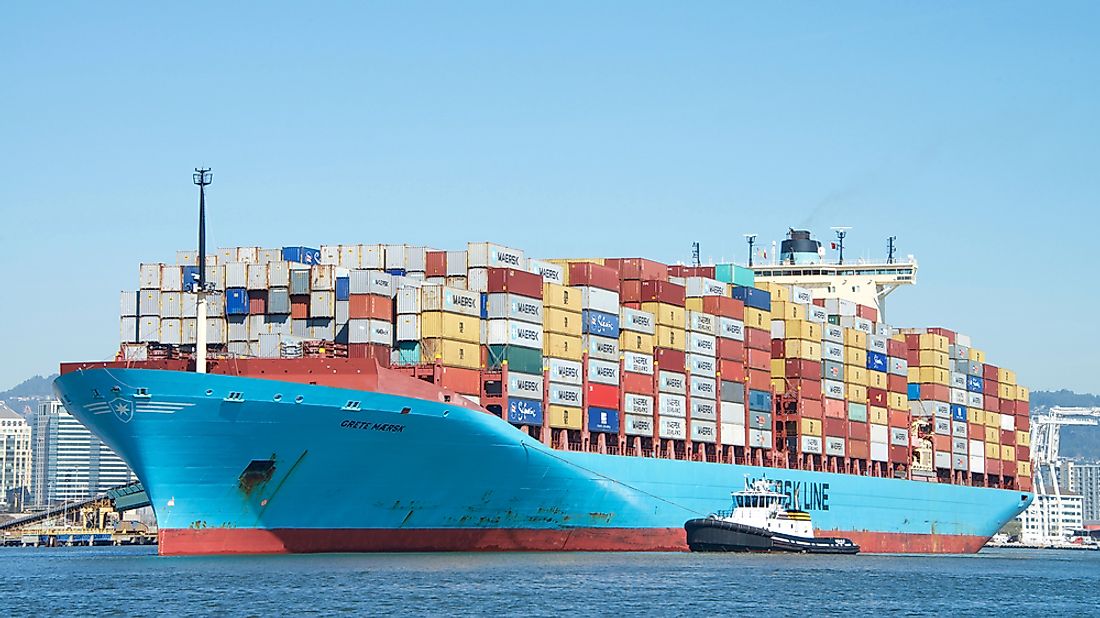What Is The Largest Ship In History?

The largest ships in the world consist mainly of oil tankers and cargo carriers. These massive vessels are used for transportation at sea of various commodities such as cars, natural gas, food, furniture, machinery and military vehicles. The largest ships are not only big in size but also in the displacement they cause at full load. Some of the biggest ships in the world can be as long as some of the tallest buildings in the world. Here we look at the largest ship in history, Mont.
The World's Largest Ship
The giant ship was given several names during the course of its life such as Happy Giant, Seawise Giant, Jahre Viking, Knock Nevis, and Mont. It was the largest man-made moving object until 2009 when it was decommissioned. It had the highest deadweight tonnage of over 564,000 tonnes. It was also the longest ship ever built and had a displacement of over 650,000 tonnes. Its large size made it impossible to navigate the Suez Canal, the Panama Canal, or even the English Channel. As a ULCC supertanker, it had an incredible body length of 458.45 m and traveled at a top speed of 16 knots which is equivalent to 30km/h.
History of the Largest Ship
The building of the Seawise Giant began in 1974 and was completed in 1979. The construction process and shipbuilding was carried out by Sumitomo Heavy Industries, a Japanese company. The construction of the ship took place in the Oppama Shipyard in Yokosuka, Kanagawa in Japan. Even after the ship was built, it remained without a name for quite some time and was only identified by the hull number-1016.
During the Iraq-Iran war in 1988, the ship was damaged during an air force attack in the Strait of Hormuz. The remains sank into the sea near Larak Island where she was anchored off. She was considered completely lost and almost unrecoverable. Despite the wreckage being lost in the sea, Norman International bought the wreckage and salvaged it. Repairs were carried out by Keppel Company, a Singaporean company, who brought back the ship and renamed it, Happy Giant.
Happy Giant resumed operations in October of 1991. In the same year, a Norwegian named Jorgen Jahre bought the Happy Giant for a total cost of $39 million and renamed it to Jahre Viking. From 1991-2004, Jahre Viking sailed under the Norwegian flag. The tanker was bought once again in 2004 by First Olsen Tankers who renamed it to Knock Nevis.
Final Journey
When the tanker was purchased in 2004 and renamed Knock Nevis, its purpose was equally changed to a moored storage tanker used in the Persian Gulf oil fields.
The ship was later renamed Mont by its new owners-Amber Development Corporation who reflagged it for its final voyage to India, where it would be demolished for scrap metal. Mont arrived on the beach in December 2009 and was scrapped by Priyablue Industries.
Its massive anchor weighing 36 tonnes is now exhibited at Hong Kong Maritime Museum.











